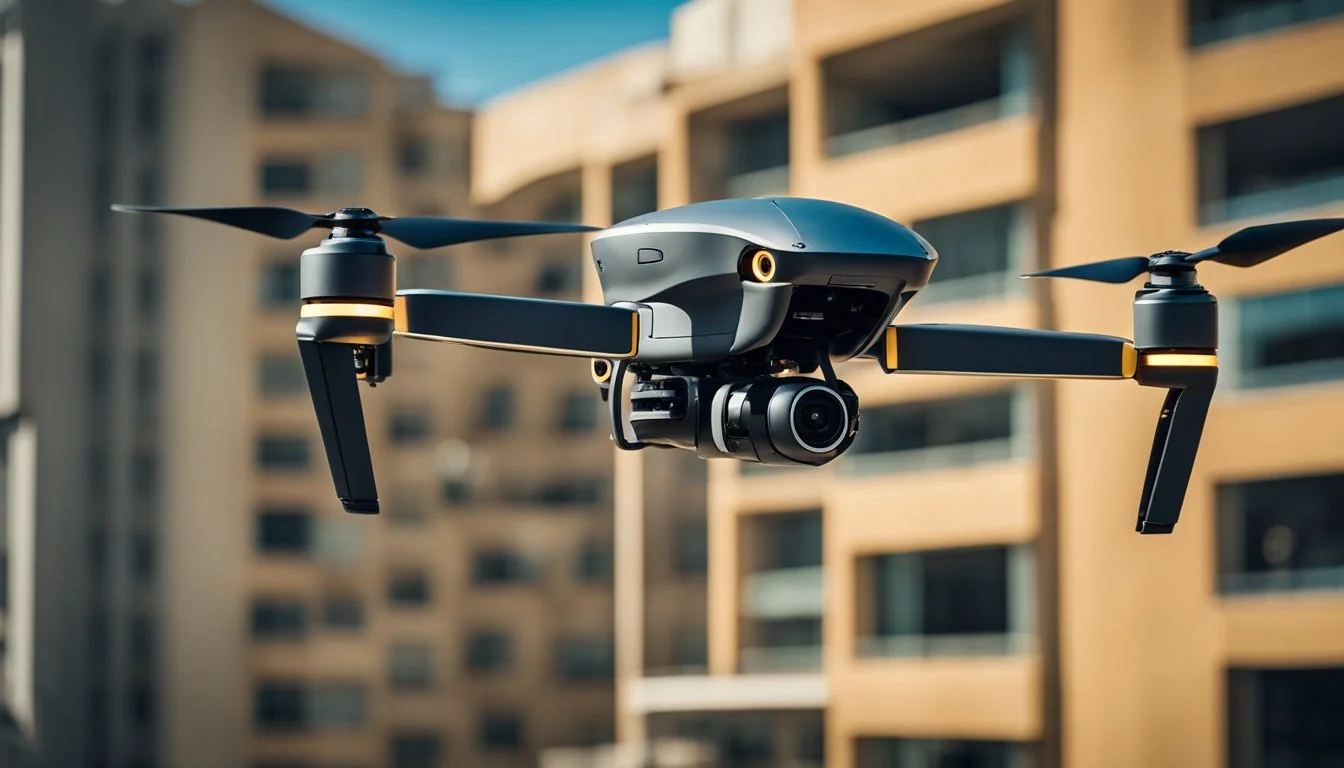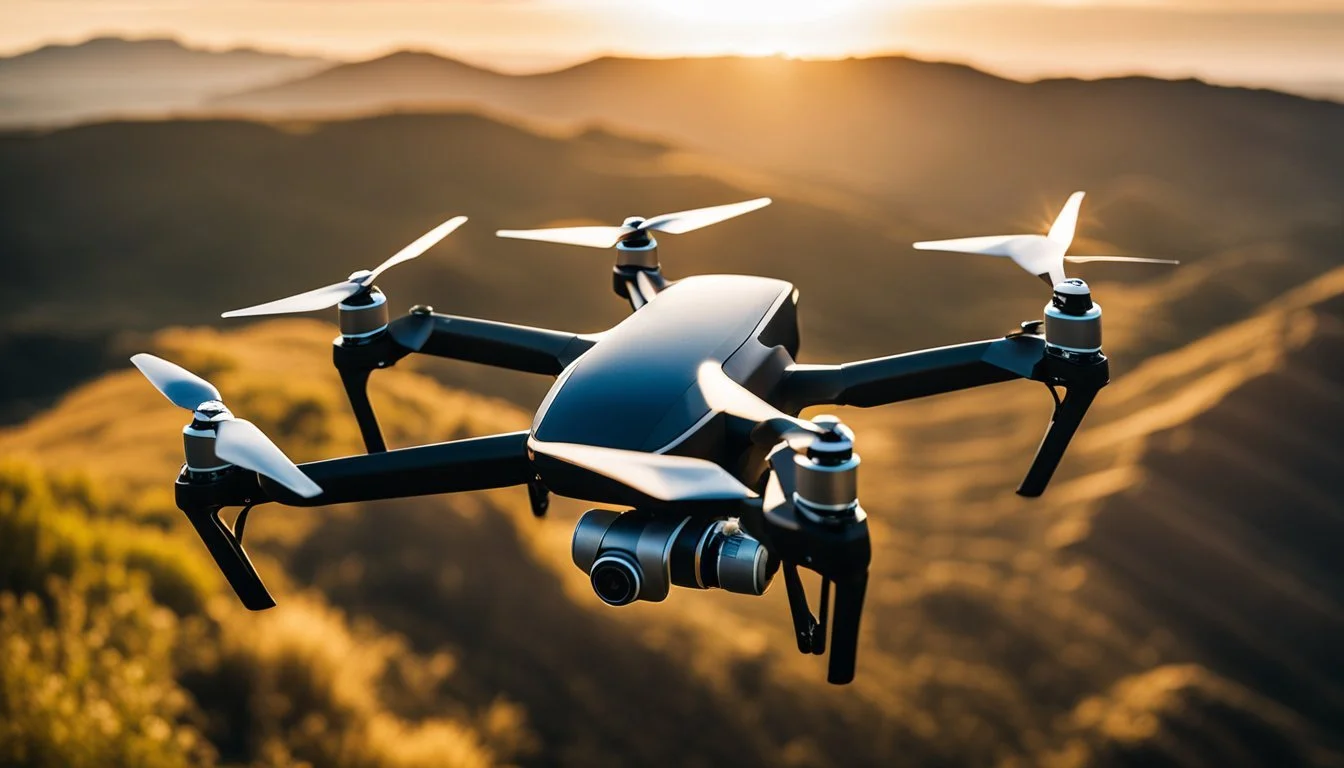7 Innovative Ways to Use Drones in Your Filmmaking
Elevate Your Cinematic Experience
Drones have become a transformative tool in the world of filmmaking, opening up new creative possibilities and enhancing production value unprecedentedly. These devices allow filmmakers to capture stunning aerial shots and unique perspectives that were once possible only with expensive equipment such as helicopters and cranes. By integrating drones into their toolkit, filmmakers can achieve a level of visual storytelling that adds depth, dynamism, and a captivating edge to their projects.
The evolution of drone technology has made advanced cinematography more accessible to filmmakers at all levels. Equipped with high-quality cameras and stabilizing systems, modern drones ensure smooth, stable footage, contributing significantly to the storytelling process. Whether producing indie films or big-budget blockbusters, the versatility and innovative potential of drones can redefine cinematic experiences.
1) Aerial Establishing Shots
Aerial establishing shots add depth and context to scenes by providing a broad view of the environment. They are perfect for setting the stage, offering viewers a sense of place before the main action unfolds.
Drones excel in capturing these expansive shots. Their ability to fly at various altitudes and maneuver through tight spaces gives filmmakers creative flexibility.
Traditional methods like cranes and helicopters have now been largely supplanted by drones, which offer a cost-effective and stable solution.
Directors can now achieve sweeping panoramas and dynamic shots with ease, making these aerial views a staple in modern filmmaking.
2) Dynamic Action Sequences
Drones have revolutionized the way dynamic action sequences are captured in films. With the ability to fly at high speeds and navigate through tight spaces, drones can follow the action closely, providing viewers with a more immersive experience.
These devices allow filmmakers to achieve shots that were once only possible using expensive rigs or complicated setups.
For intense chase scenes, drones can effortlessly track vehicles or characters, maintaining smooth and stable footage. The flexibility in movement and angles enables the creation of exhilarating sequences.
A drone can seamlessly transition from wide shots to close-ups, adding a layer of visual storytelling that captivates the audience.
Drones such as the DJI Inspire 2, equipped with advanced stabilization systems and high-quality cameras, are often used for these sequences. These drones offer high-resolution recording, ensuring that every detail of the action is captured with precision.
Being lightweight and agile, drones can be quickly deployed, allowing directors to experiment with various angles and perspectives without extensive setup times. This capability is especially beneficial in fast-paced shooting environments.
In summary, drones provide filmmakers with unparalleled creative freedom to craft dynamic action sequences that were previously unimaginable.
3) Creative Timelapses
Timelapse photography using drones provides filmmakers with a new dimension of creativity.
By setting a drone to move along a preprogrammed path, it's possible to capture extended sequences of scenes from the air.
This technique offers dynamic motion that ground-based timelapses can't achieve.
The DJI Inspire 2, with its advanced gimbal and high-resolution camera, is well-suited for these tasks.
Filmmakers can document the transformation of landscapes, bustling cities, or events over time.
Timelapses from drones enhance storytelling by visually compressing time, adding a dramatic effect to the narrative.
Careful planning and precise flying are essential for creating smooth and engaging sequences.
Overall, these timelapses can add a captivating element to any film.
4) Unique POV Shots
Drones allow filmmakers to capture unique POV shots that were previously difficult or impossible to achieve. By attaching a camera to a drone, directors can simulate the perspective of a bird, flying object, or even a character moving through vast landscapes.
The ability to film from unique angles adds dramatic impact to scenes. Directors can create engaging sequences that draw viewers into the story, offering a truly immersive experience.
Flipping the camera perspective can also add creativity to the narrative. For instance, a drone can capture an aerial shot that transitions to a first-person view, adding dynamic visual storytelling.
Using drones, filmmakers can experiment with motion that mimics real-life phenomena, such as hovering or diving. This gives scenes a sense of realism and depth, enhancing visual intrigue.
Additionally, drones provide the flexibility to navigate tight or complex spaces, allowing for innovative framing. These unique POV shots enhance a film’s aesthetic, making it stand out visually.
5) Complex Tracking Shots
Complex tracking shots elevate a film's visual storytelling by following a moving subject smoothly and precisely. Drones provide an unmatched ability to capture these dynamic shots with fluid motion and perfect pacing.
Achieving a complex tracking shot with a drone requires precise flight control. The pilot needs to maintain consistent speed and altitude while maneuvering through various obstacles. This ensures the subject remains in focus and the shot stays stable.
Drones like the DJI Inspire 2, with its 360-degree rotating gimbal, are particularly well-suited for tracking shots. The gimbal guarantees smooth footage, allowing filmmakers to rotate the camera freely without affecting the drone's trajectory.
Using a drone for complex tracking shots opens up creative possibilities. Filmmakers can capture breathtaking sequences that would be difficult or impossible to achieve with traditional equipment. This enhances the narrative and draws viewers into the story.
Practice is crucial when it comes to mastering complex tracking shots. Filmmakers should invest time in honing their drone piloting skills to ensure each shot aligns with their creative vision.
6) Cinematic Drone Lighting
Drones have expanded their utility beyond just capturing breathtaking aerial shots. Filmmakers can now use drones to elevate their lighting setups on set.
Equipped with powerful LED lights, drones can provide dynamic illumination from above. This allows for creating striking effects that were previously difficult or impossible with traditional lighting equipment.
Drone lighting offers flexibility in positioning. Filmmakers can adjust light angles and intensities in real-time, enhancing the overall visual narrative. They can light scenes from perspectives that would be challenging to achieve otherwise.
Such lighting setups can simulate natural light sources, such as moonlight or sunlight, more accurately. This capability adds a layer of realism to the visual storytelling process.
Light-equipped drones can also be used for nighttime shoots. Their maneuverability ensures consistent lighting even in complex environments or difficult terrains.
7) Virtual Reality Capture
Drones have opened up new possibilities for capturing immersive virtual reality (VR) experiences. By offering unique aerial perspectives, drones can record high-quality VR content that provides viewers with a sense of presence and excitement.
Equipped with advanced cameras, drones can capture 360-degree footage. This footage can be used to create VR environments that allow viewers to explore scenes from every angle.
Drone-based VR capture is especially useful in showcasing stunning landscapes and complex action sequences. It provides an experience that ground-based cameras cannot match, enveloping the viewer in the scene.
To capture VR content, filmmakers often use drones with high-resolution cameras and specialized gimbals. These tools ensure smooth and stable footage, essential for a comfortable VR experience.
VR capture with drones is not limited to natural settings. It can also be used in urban environments, providing dynamic views of cityscapes and events.
Drones can navigate tight spaces, flying through areas that would be challenging for traditional filming equipment. This flexibility allows for innovative VR storytelling.
Virtual reality capture using drones is transforming the way filmmakers create and audience experience content.
Technical Aspects of Drone Filmmaking
Understanding the technical aspects of drone filmmaking is essential for capturing high-quality aerial footage. This section covers choosing the right drone, adjusting camera settings, and maintaining stability and control during flight.
Choosing the Right Drone for Your Project
Selecting the appropriate drone is crucial for achieving desired cinematic results. Drones like the DJI Inspire 2 are popular for their advanced features. It includes a 5.2K camera and a 360-degree rotating gimbal, allowing for smooth, stable footage from any angle.
Consider the drone's flight time, speed, and range. Professional options often feature longer flight times and faster speeds, which are essential for dynamic shots. Payload capacity is also important for carrying additional camera equipment or lenses. Take into account the drone's build quality and ease of use, especially for challenging shoots.
Camera Settings for Aerial Cinematography
Proper camera settings directly influence the quality of aerial footage. Frame rates for standard shooting typically range from 25 to 30 fps. For slow-motion scenes, increase frame rates to at least 60 fps, and in some cases, up to 120 fps.
Ensure correct resolution settings, with many high-end drones offering 4K or 5.2K capabilities. Adjust ISO, shutter speed, and aperture according to lighting conditions to avoid overexposure or noise. Utilize filters, such as ND filters, to control light exposure and achieve the desired cinematic look. Experimenting with different settings helps capture the perfect shot.
Understanding Drone Stability and Control
Stability and control are vital for smooth and professional-looking footage. Modern drones are equipped with advanced stabilization systems, including gimbals and built-in GPS. These systems help minimize vibration and maintain a steady shot even in windy conditions.
Learning to control the drone precisely is essential, whether through manual piloting or pre-programmed flight paths. Practice flying in different environments to understand how the drone responds to various conditions. Utilize features like obstacle detection and avoidance to navigate safely. Achieving a balance between manual control and automated functions enhances the quality and creativity of the footage.
Creative Techniques Using Drones
Innovative drone cinematography allows filmmakers to explore unique perspectives and deliver smooth, professional-quality shots. These creative techniques can enhance storytelling and captivate audiences.
Innovative Camera Angles
Drones offer the flexibility to capture dynamic camera angles that would be challenging or impossible with traditional equipment.
Low-altitude flyovers can create intimate scenes, adding depth and dimension. High-altitude shots can showcase expansive environments, emphasizing scale and setting. For example, using a drone to achieve a bird's-eye view can reveal patterns and structures from above, presenting scenes in a fresh and engaging way.
Creative reveals are another technique where a drone starts from a hidden or obscured position and moves to unveil the subject or scene, adding dramatic effect. Combining these angles with motion can further elevate the visual impact, making scenes more immersive.
Smooth Motion Shots
Achieving smooth motion shots is crucial for professional-looking footage. Drones equipped with gimbals and stabilization technology can capture seamlessly smooth movement. The DJI Inspire 2, with its 360-degree rotating gimbal, is an example of a drone that provides exceptionally stable footage.
Utilizing techniques like dolly zooms can add cinematic flair by zooming in or out while moving the drone, creating a striking visual effect. Tracking shots are another option, where the drone follows a subject smoothly, maintaining focus while flying at a constant pace.
Adjusting controller sensitivity allows operators to fine-tune the drone's responsiveness, ensuring precise control over every movement. These adjustments help in executing complex shots, such as compound movements, where the drone performs multiple motions simultaneously for dynamic and layered visuals.


